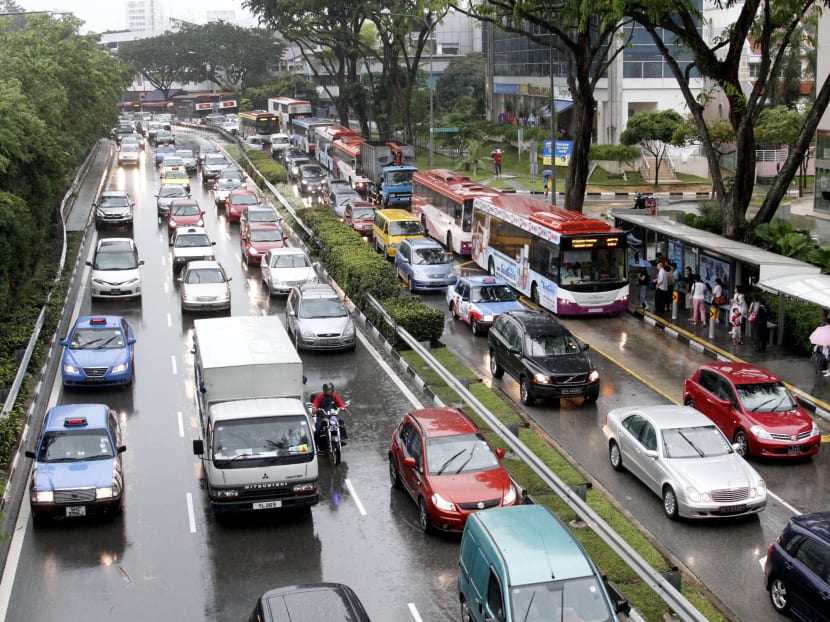Zero car and motorcycle growth from February 2018
SINGAPORE – In the latest move to go car-lite, the authorities will cut the growth rate of cars and motorcycles (Categories A, B and D) to zero from February, down from the current 0.25 per cent.
SINGAPORE – In the latest move to go car-lite, the authorities will cut the growth rate of cars and motorcycles (Categories A, B and D) to zero from February, down from the current 0.25 per cent.
The growth rate has been steadily cut for the past decade, with the last round taking place in February 2015, when it was halved from 0.5 to 0.25 per cent. Then-Minister for Transport Lui Tuck Yew had signalled that growth rate would likely drop to zero eventually.
The Land Transport Authority (LTA), which made the announcement on Monday (Oct 23) as it revealed the Certificate of Entitlement (COE) quota for November to January 2018, said the cut is driven by land constraints and ongoing improvements to the public transport system.
Twelve per cent of Singapore’s total land area is taken up by roads and there is “limited scope” for further expansion. Meanwhile, the rail network has grown in length by 30 per cent over the past six years - with new projects in the pipeline - and new buses and bus routes have been added.
The growth rate of goods vehicles and buses (Category C) will remain unchanged at 0.25 per cent until 2021, to give businesses more time to improve the efficiency of logistics operations and reduce the number of commercial vehicles needed, said LTA.
The vehicle growth rate will be reviewed again in 2020, it said.
The upcoming adjustments are not expected to significantly affect the supply of COEs, which is determined largely by the number of vehicle deregistrations, LTA added.
The current growth rate allowed a total of 2,304 more vehicles for the year up until next January – of which about a-third was for Category A cars, 30 per cent was for Category B cars and about 15 per cent for motorcycles.
Meanwhile, the COE quota for November to next January will shrink 5.3 per cent from the current quarter to 25,913 across all categories. This means an average monthly quota of 8,635, continuing a decline that started last quarter.
The number of COEs for Category C (goods vehicles and buses) will tumble the most, shrinking 45.4 per cent to 1,456 (from 2,666 in August to October).
Certificates for Category A (small cars up to 1,600cc) will dip to 10,081, down 7.4 per cent from 10,890 between August and October. The number of Open Category certificates will decrease 5.1 per cent to 3,077.
Categories B (big cars above 1,600cc) and D (motorcycles) will buck the trend, however. The Category B quota will increase 7 per cent to 8,246, while Category D will go up from 2,862 to 3,053 (up 6.67 per cent).
While a knee-jerk reaction from buyers is possible in the next COE bidding exercise, it would be irrational, said urban transport expert Park Byung Joon from the Singapore University of Social Sciences (SUSS).
Whether the tightening of supply could have an impact on COE premiums in the longer run will depend on whether the public transport system can adequately serve the commuting needs of Singapore’s growing population, said SUSS transport economist Walter Theseira.
While owning a car remains an aspiration for some, higher prices that could result from a tighter vehicle supply could mean more consumers ultimately keeping to the more economical option of taking public transport.
Raising the reliability and quality of public transport would also help a car-lite society to take shape here, added Dr Park.
“(A reduction in vehicles allowed) doesn’t help to ease the unhappiness that have resulted among commuters due to the perceived lack of reliability,” he said.







